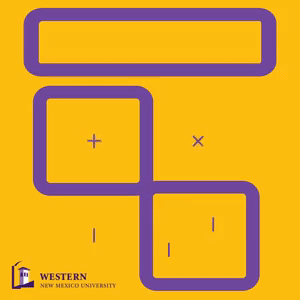The Gila/San Francisco Water Commission discussed letters of support for projects going into the Tier-2 application process of the Arizona Water Settlements Act planning process.
Chairman Vance Lee proposed writing letters of support for those projects, which the commission had previously supported, and which have passed the Tier-1 application process by an evaluation panel, consisting of representatives from the Interstate Stream Commission, the Office of the State Engineer, New Mexico Game and Fish Department, the New Mexico Environment Department and the Energy, Minerals and Natural Resources Department.
The proposals that passed Tier-1 are eligible for a preliminary Tier-2 evaluation before being submitted for the final Tier-2 evaluation.
Lee mentioned several that he personally supported and some of which had been verbally supported by the commission. They included the Hidalgo County offstream storage project, the Sunset and New Model ditches lining, as well as some lining of ditches in Catron County. Also included are city of Deming proposals and some San Francisco River proposals.
He opened the floor for discussions, as the preliminary Tier-2 evaluation process deadline is Oct. 31.
It was suggested that those proposing projects should request the commission for support and individual letters of support would be written.
Gerald Schultz, representing the Black Range Resource Conservation and Development District, pointed out that Craig Roepke of the ISC has said anyone could write a letter to the ISC requesting consideration of or giving support to a project.
Because the final deadline for submission of the Tier-2 applications is Dec. 14, the GSFWC members decided to table the issue until next month's meeting.
Tom Bates, representing Deming and Luna County, said he hoped letters of support would not be considered in lieu of GSFWC consulting with the ISC on priority projects.
Anthony Gutierrez of Grant County said verbiage in the letters of support could make it clear that the GSFWC is going to recommend priorities.
Topper Thorpe of the Gila Basin Irrigation Commission asked if the GSFWC was going to support all the projects that passed Tier 1.
"It doesn't make sense to support all of them," Lee said. Gutierrez suggested that the support should be given only after reviewing those who request such support.
Those proposals wanting possible GSFWC support are asked to email the requests and the Tier-1 application by Oct. 31 to Dolores Dominguez at
Gutierrez pointed out that the preliminary evaluations were extremely helpful, and some projects that did not go through the preliminary process on Tier 1 did not pass to Tier 2.
Bates asked if the GSFWC should take a stand on a few San Francisco River proposals that did not pass Tier 1.
Hugh B. McKeen of Catron County said he understood that although the projects did not pass Tier 1, they would still be considered for future funding by the ISC.
Lee pointed out that a couple of dams did not pass, but along with agricultural conservation would be considered by the ISC.
"I don't think it's up to us; it's up to the ISC," Lee said.
Discussion ensued on how to save 350 cubic feet per second from a 10,000 cfs flow.
Schultz said dam design does include letting some flow through. In past years, spillways were not sufficient for maximum flood flows, but dam sizing has changed. He said he understood Roepke saying that he believed the San Francisco River area could not afford such projects.
McKeen said the county has contacted someone in the county who is a hydrologist and geologist to review the AWSA.
"He told us there is no reason not to have a dam," McKeen said. "When we get a flood, it sometimes comes at night and is gone by morning. If you catch the first water, you get all the silt and debris. Why not have a dam that can release water a little at a time? We have a lot of questions."
Lee said if all the water has to be immediately released then there is no flood protection.
"Are we correct in our assessment that 350 cfs is the amount we can take and have to let the rest go by?" Lee asked Mary Reece of the U.S. Bureau of Reclamation.
"There are a lot of different rules before you can take any water," Reece replied. "Diversions are possible through the Consumptive Use and Forbearance Agreement. Everything in it applies to diversions."
Schultz said a so-called conservation pool is generally designed to take care of a significant amount of water before release.
"Yes, it is possible to divert, but it is complicated," Reece said.
McKeen said he would like to understand "what we can do, when and how." He said he also believes the issue of lost water rights is going to go forward through the Office of the State Engineer.
The next agenda item addressed a plan by resolution to communicate with the ISC. Gutierrez recommended it remain as old business on the agenda until the GSFWC can make priority recommendations to the ISC.
After a brief discussion considering financial support for the New Mexico First Town Hall to take place in February, members agreed not to provide such support, because the event is already funded by counties and municipalities in the four-county area of Grant, Hidalgo, Catron and Luna.
Gutierrez emphasized that it is vital to the process that "we have more than a handful of representation to get a balance of all members of the community agricultural, conservative, environmental and municipal."
Bates said people will have to register for the event, and a committee will select participants so not just one particular organization or group can participate.
Schultz said he was somewhat upset by how the town hall was going to proceed. "It sounds like they will be selective in the participation instead of letting people decide themselves whether to participate."
Lee said that, subsequent to the last GSFWC, he sent a letter to the ISC requesting representation by the New Mexico Department of Agriculture on the Tier-2 evaluation panel. "It is on the agenda of the next ISC meeting later this month." He requested that as many members as possible attend the meeting to support the request.
Archie Payne of Virden asked about the prospects for a new state engineer.
Only two names of the possible four or five candidates were know by the GSFWC members. Estevan Lopez, ISC director is one candidate, and Tom Turney, past state engineer, is another candidate.
One new Interstate Stream commissioner has been named to the commission and one has been renewed.
McKeen said he and Lopez were on the same flight to California recently, and Lopez told him he was one of the final three under consideration for the state position.
Schultz named two webinars in which he had participated. They were "Running the Climate Rapids: Using the Iterative Risk Management Roadmap." He compared it to the roadmap developed for the stakeholders process, which had not advanced very far in the planning process.
A second webinar was "Infrastructure Adaptations to Address National Security."
He also suggested two websites for drought information: http://droughtreporter.unl.edu and https://www.drought.gov/portal/server.pt/community/southern_plains.
Schultz said he would be attending a conference on the history of water in North Dakota, where he grew up.
The next GSFWC meeting will take place at 9 a.m. Tuesday, Nov. 15, at the Grant County Administration Center.








